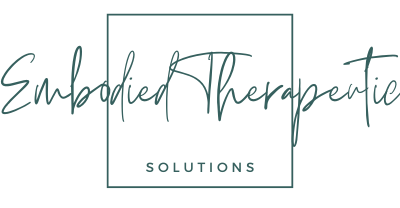My Experience With EMDR Therapy, as a Therapist and How It Changed My Life
My experience with EMDR therapy (Eye Movement Desensitization and Reprocessing) began in 2017, right after I graduated from college. At that point, I had already spent years in and out of therapy since high school, but I still didn’t feel like my anxiety was under control. I had tried talk therapy, journaling, and coping skills, but nothing seemed to really touch the deep pain I was carrying.
That summer, my anxiety was at its peak. I found myself overwhelmed, restless, and constantly stuck in cycles of worry. I knew I needed help and decided to return to therapy, even though in the past I had walked away feeling discouraged.
Why Traditional Therapy Didn’t Feel Helpful
One of the biggest struggles for me in therapy was feeling misunderstood. My relationship with my mother had been complicated and painful, but when I opened up about it, many therapists would simply respond with, “Well, she’s your mom.” Instead of helping me work through the hurt, it left me feeling invalidated and stuck.
This time, however, I found a therapist who listened differently. She didn’t brush off my feelings or minimize my experience. After hearing my story, she gently asked if I would be open to trying something called EMDR therapy. At the time, I had no idea what EMDR was but I was desperate for relief and willing to try anything.
Starting EMDR Therapy
When I first began EMDR sessions, we focused on childhood memories and the emotional wounds tied to my relationship with my mom. To my surprise, the process was intense. In the beginning, I would shake uncontrollably and cry during sessions. Later, I learned that this was actually my body’s way of releasing stored trauma, something I hadn’t realized was still impacting me so strongly.
Despite how uncomfortable it felt at first, I began noticing changes. Over time, those same memories that once triggered anger, resentment, and anxiety started to lose their power. I could think about the past without the same physical or emotional reaction. The deep pain I had carried for so long started to feel lighter.
Healing Beyond Childhood Trauma
As I continued therapy, I realized EMDR wasn’t just helping me with my relationship with my mom—it was helping me with many different parts of my life. I used EMDR for past experiences that caused anxiety, present anxiety symptoms, and even challenges in my relationships. Each time, I saw how this therapy helped my brain and body process old wounds so I could move forward without being weighed down by them.
EMDR gave me something I never found in traditional therapy: the ability to truly heal instead of just “cope.” I could finally feel a sense of peace where before there had only been pain.
How EMDR Shaped My Career as a Therapist
This personal healing journey was so powerful that it influenced my path as a therapist. When I started my own training and career in counseling, I knew I wanted to become trained in EMDR therapy. I wanted to offer my clients the same chance at freedom and healing that I had found.
Now, as a therapist, I use EMDR to help clients work through anxiety, trauma, difficult family relationships, and painful memories. Whether someone is healing from childhood trauma, navigating postpartum challenges, or trying to move forward from a toxic relationship, EMDR provides a way to finally let go of the past and live more fully in the present.
Why I Believe in EMDR
Looking back, I can confidently say that EMDR therapy changed my life. It helped me heal from the anxiety and trauma that once felt impossible to overcome. It gave me hope when I felt hopeless. And it showed me that our minds and bodies are capable of incredible healing when given the right tools.
If you’ve ever felt stuck in your anxiety, weighed down by painful memories, or unsure if therapy can truly help, I encourage you to explore EMDR. It’s not always easy, but the healing and freedom that can come from it are worth it.

